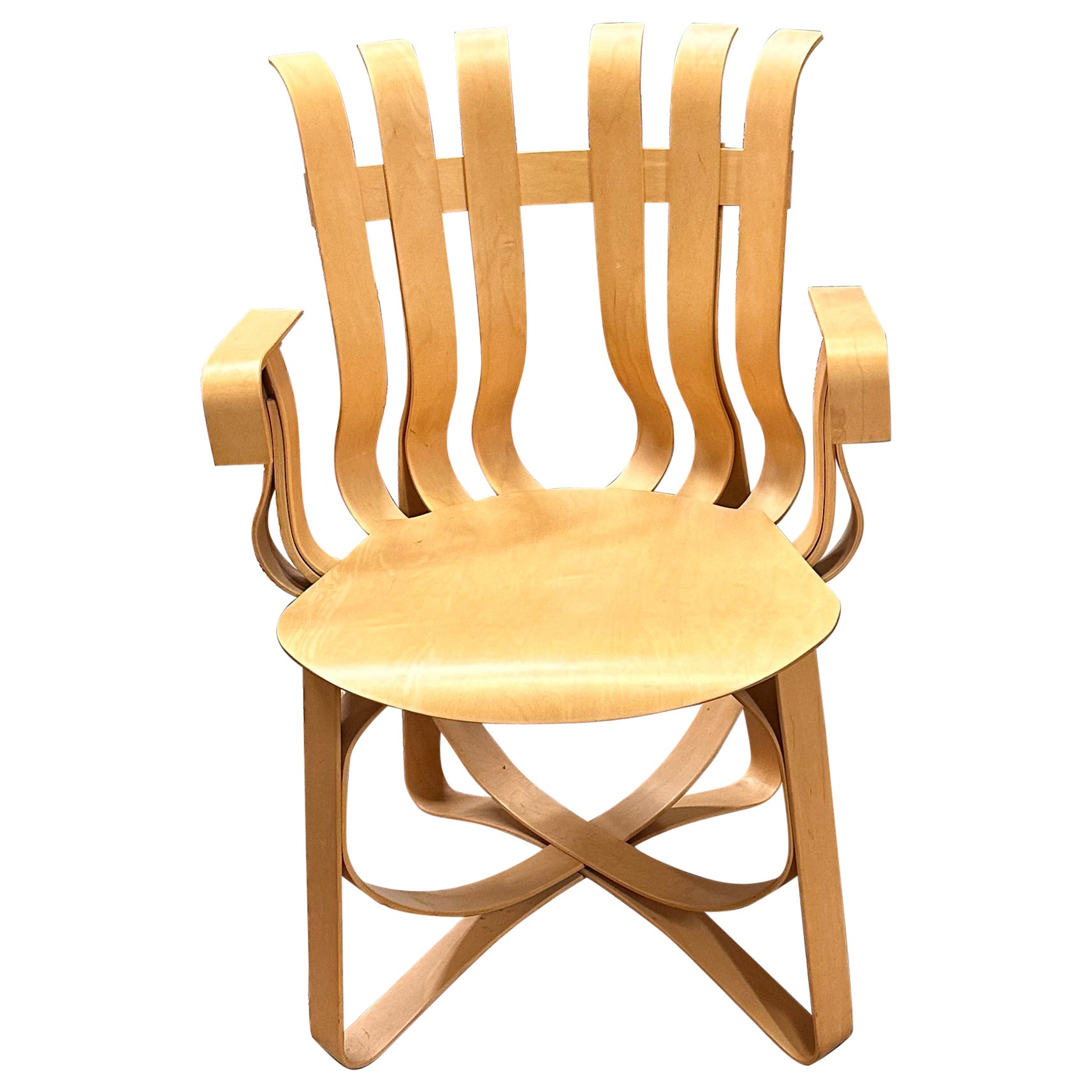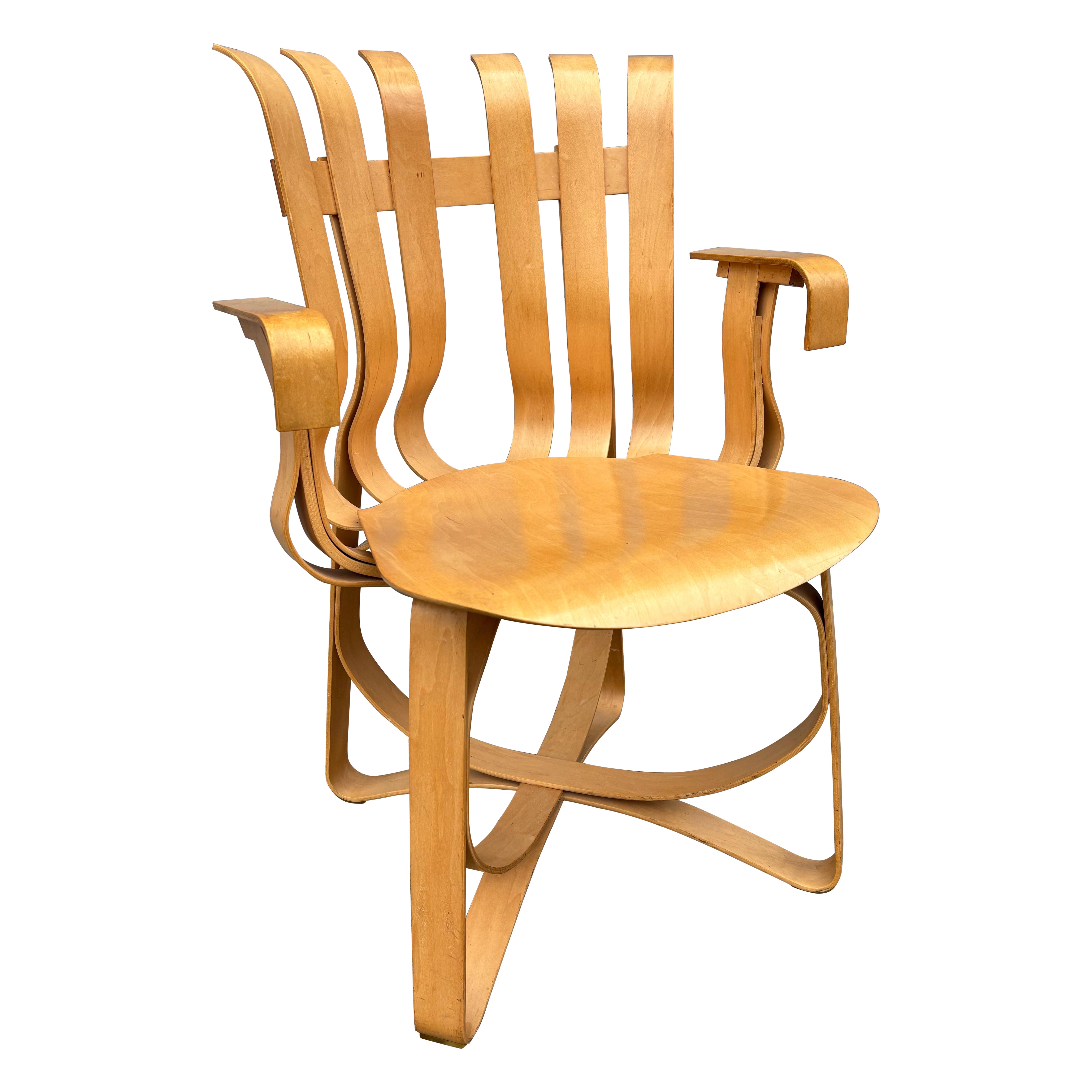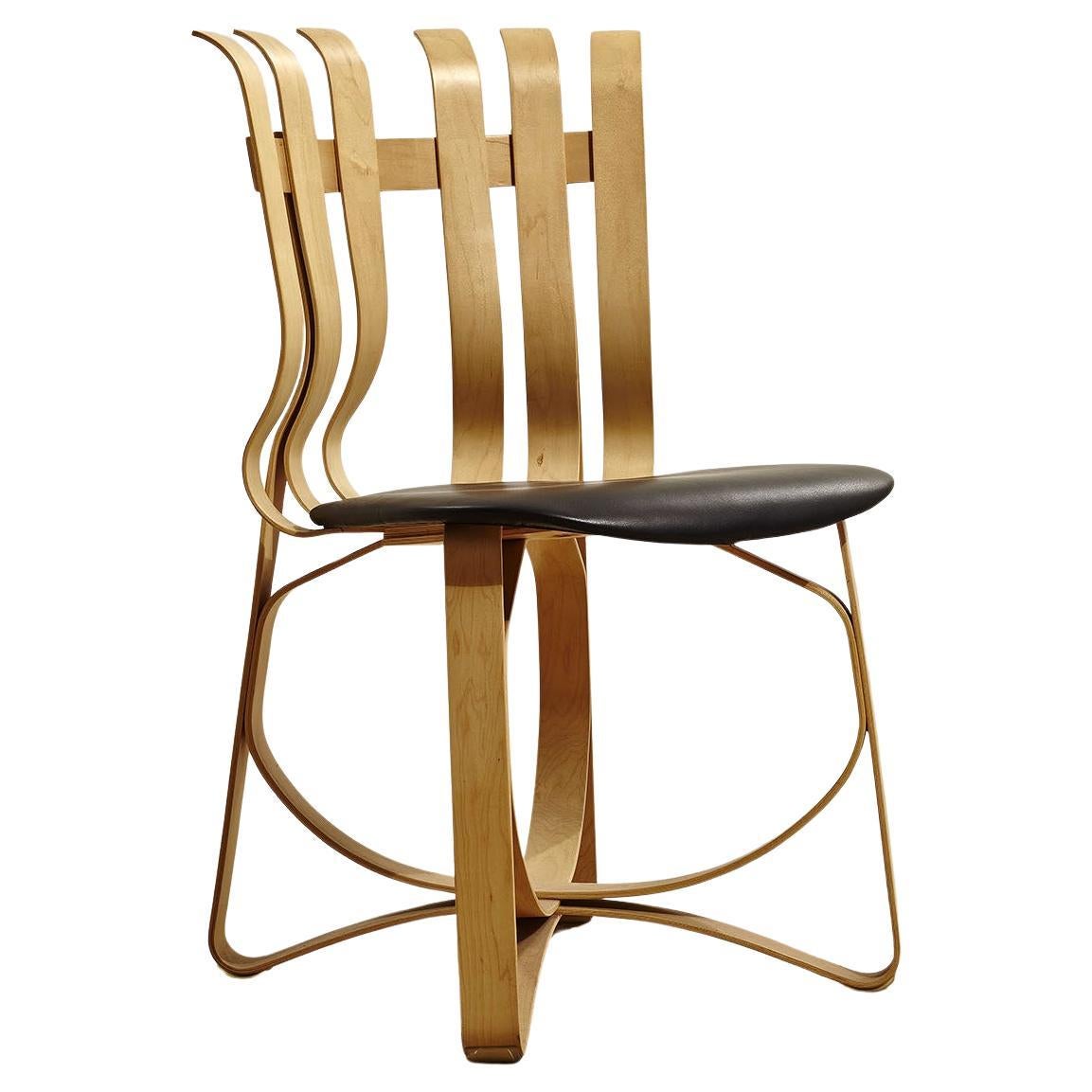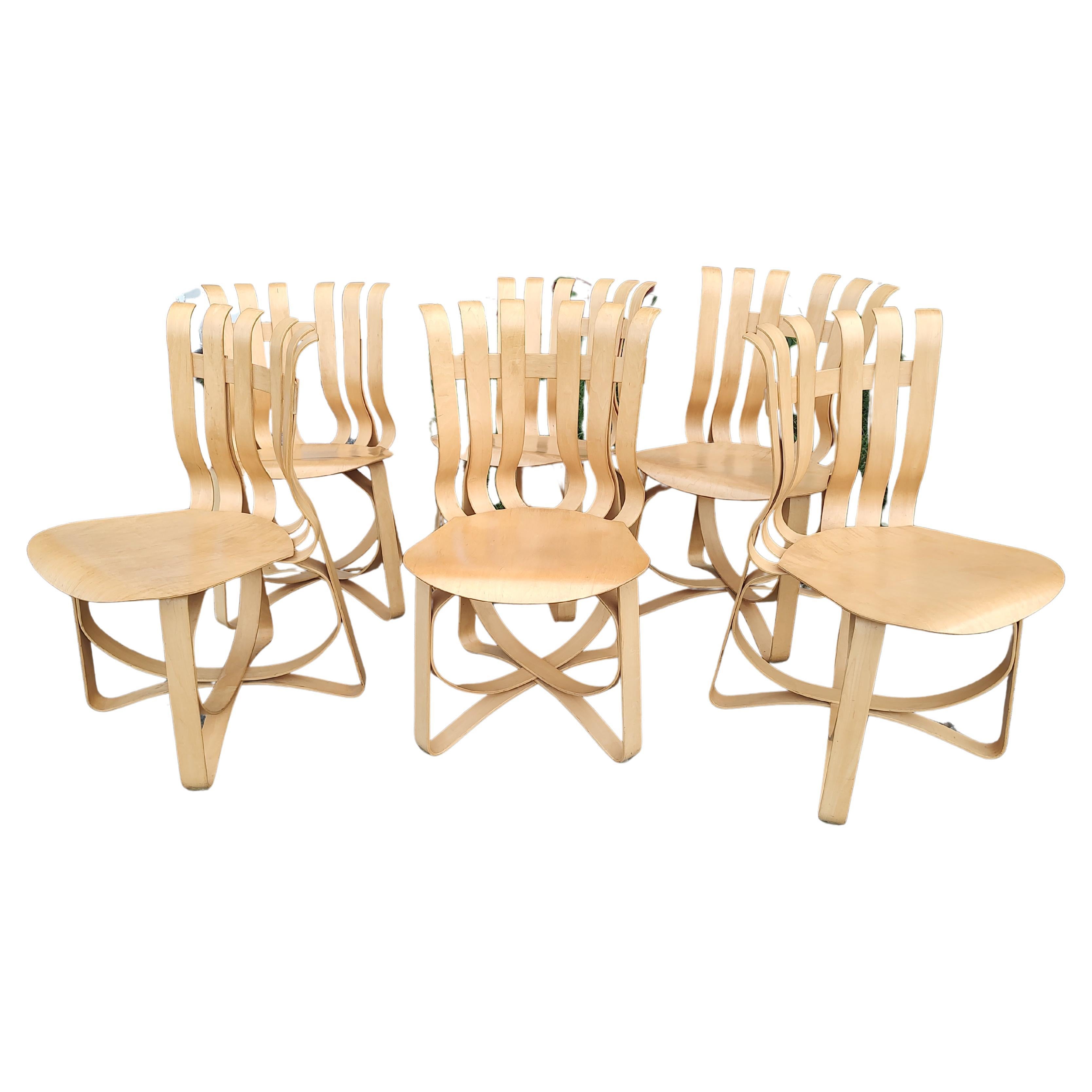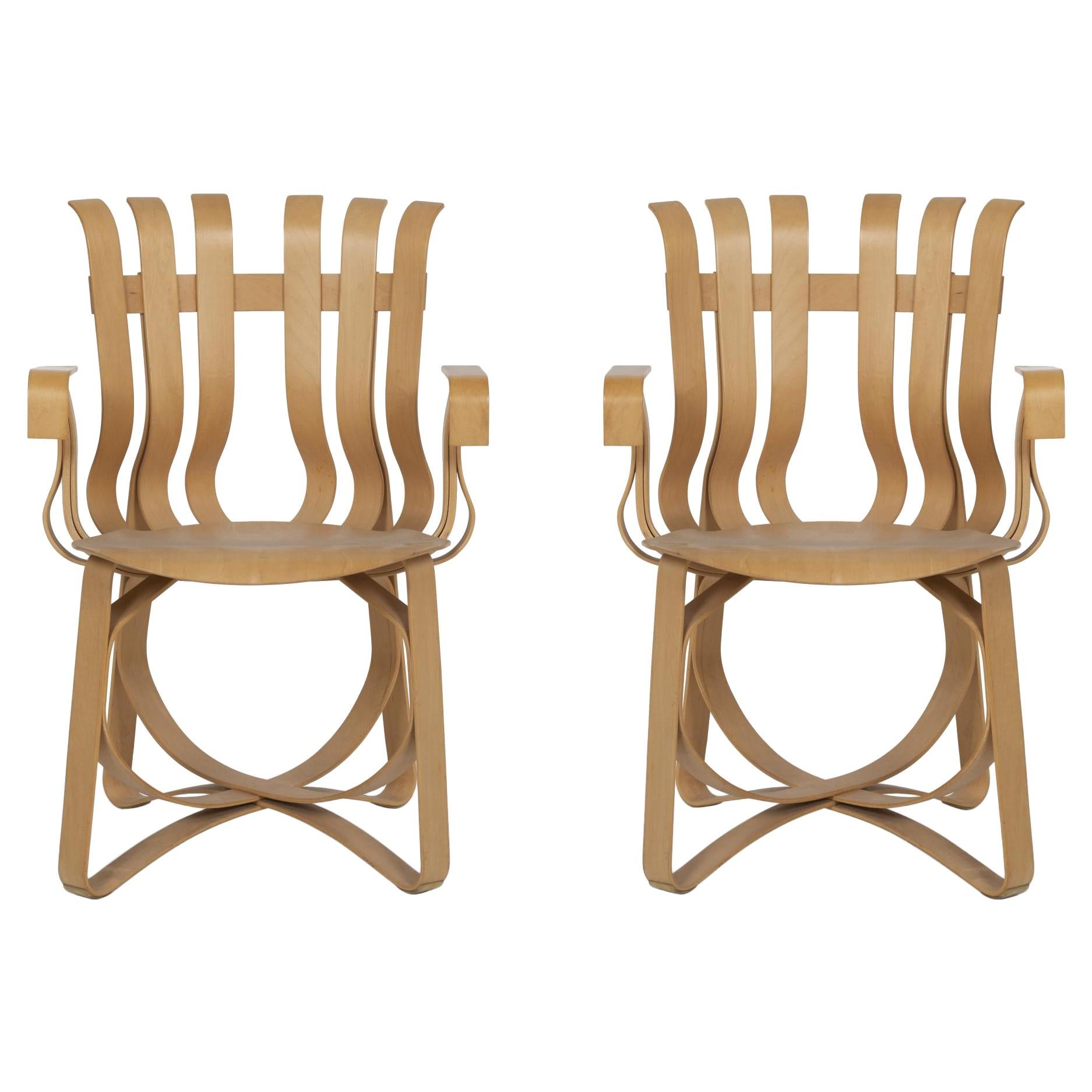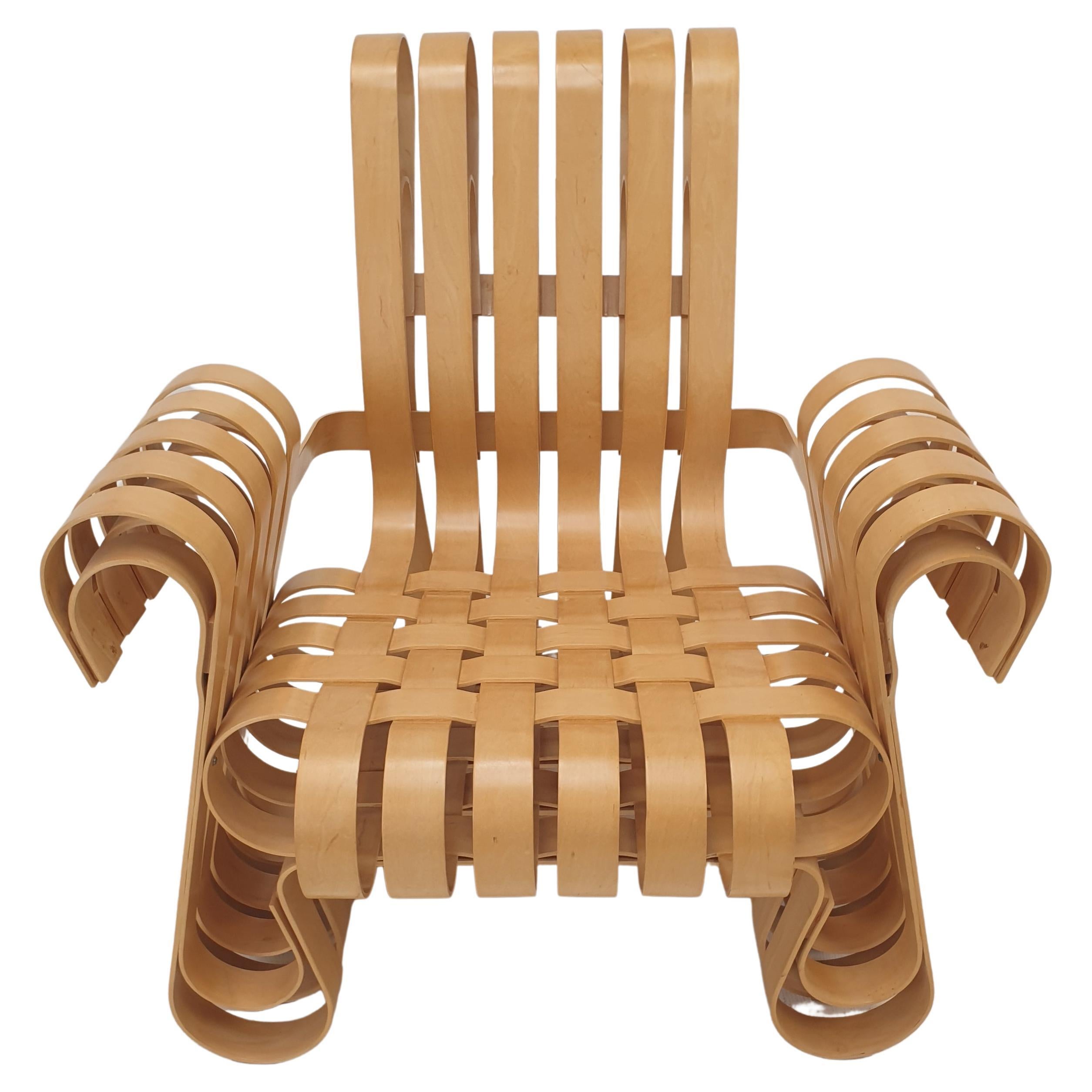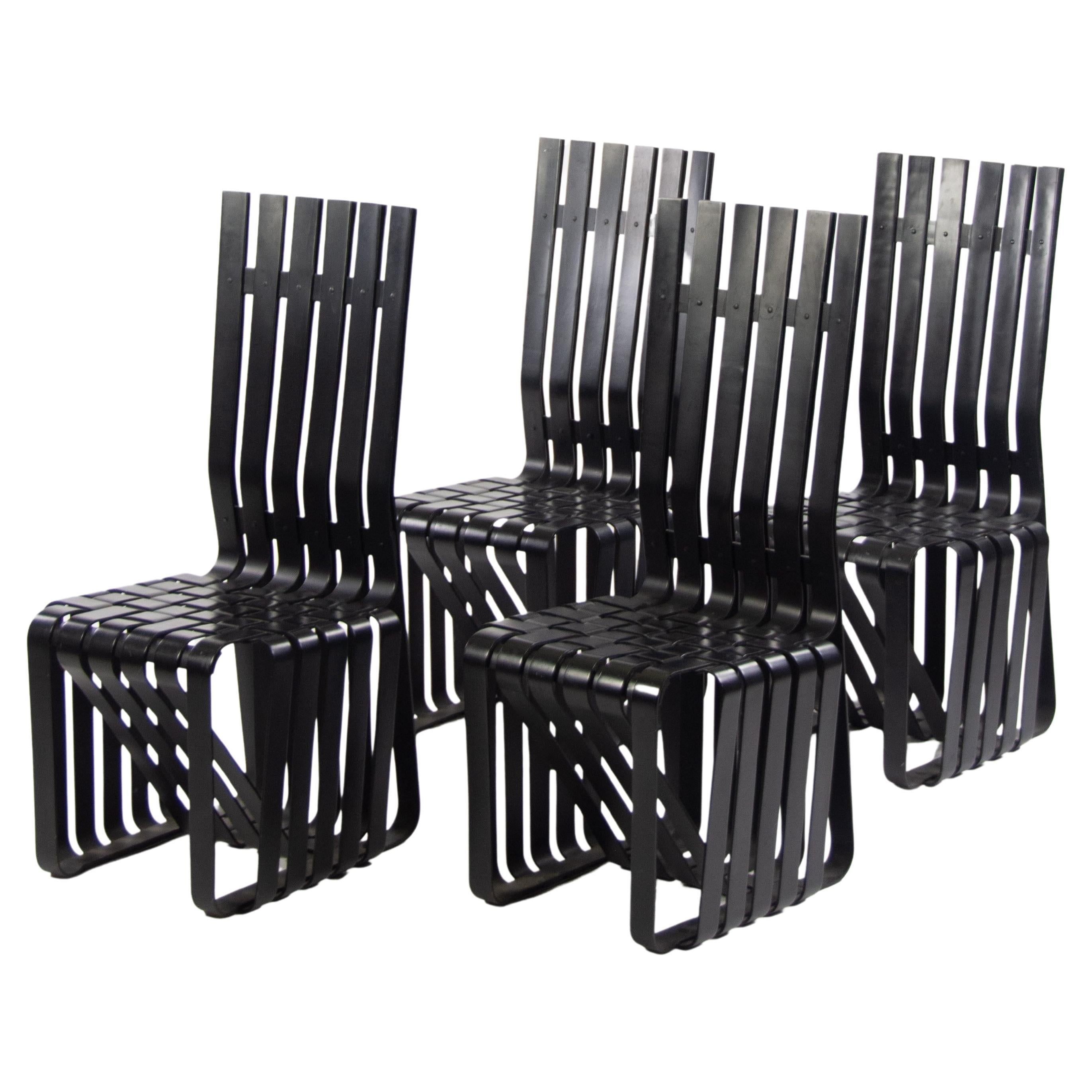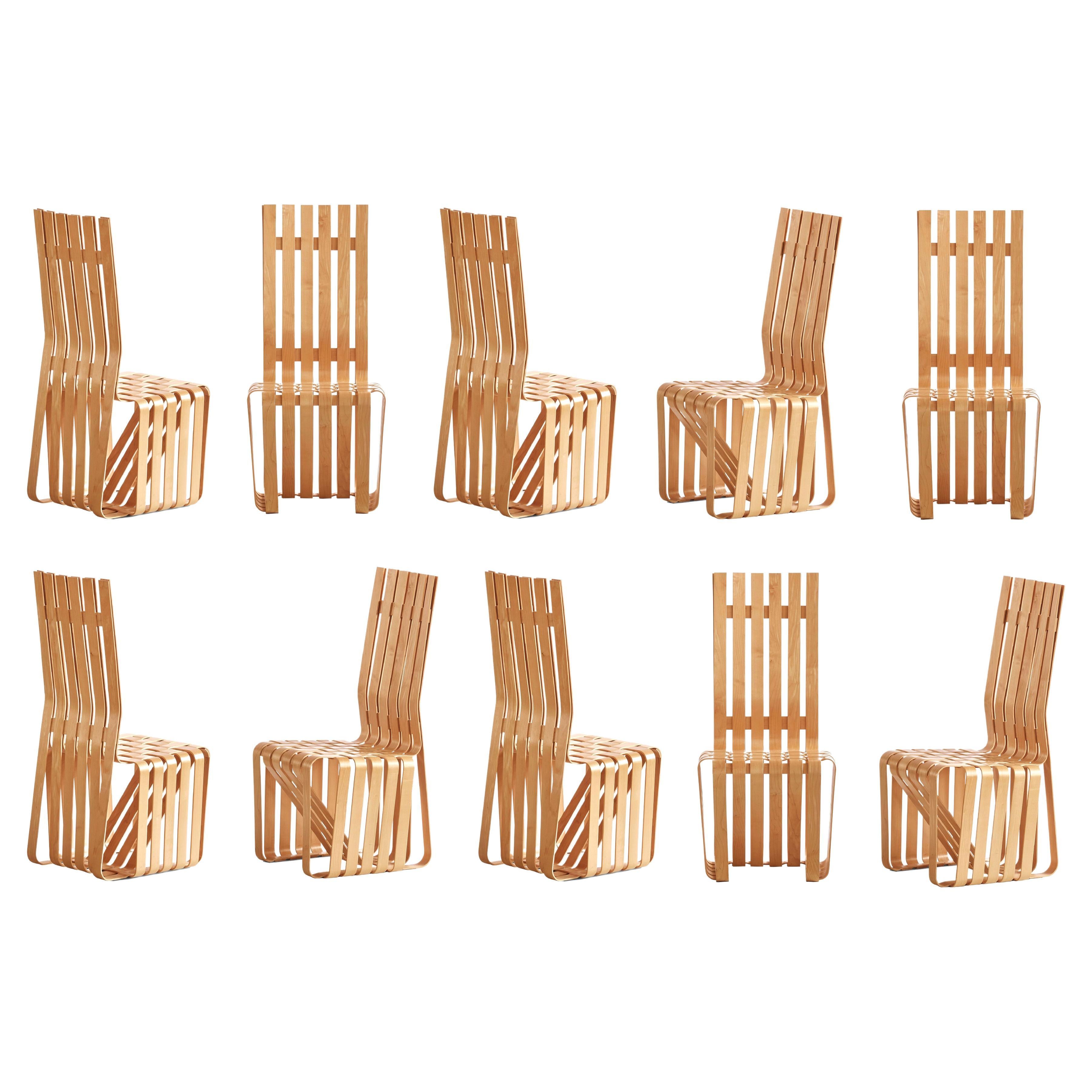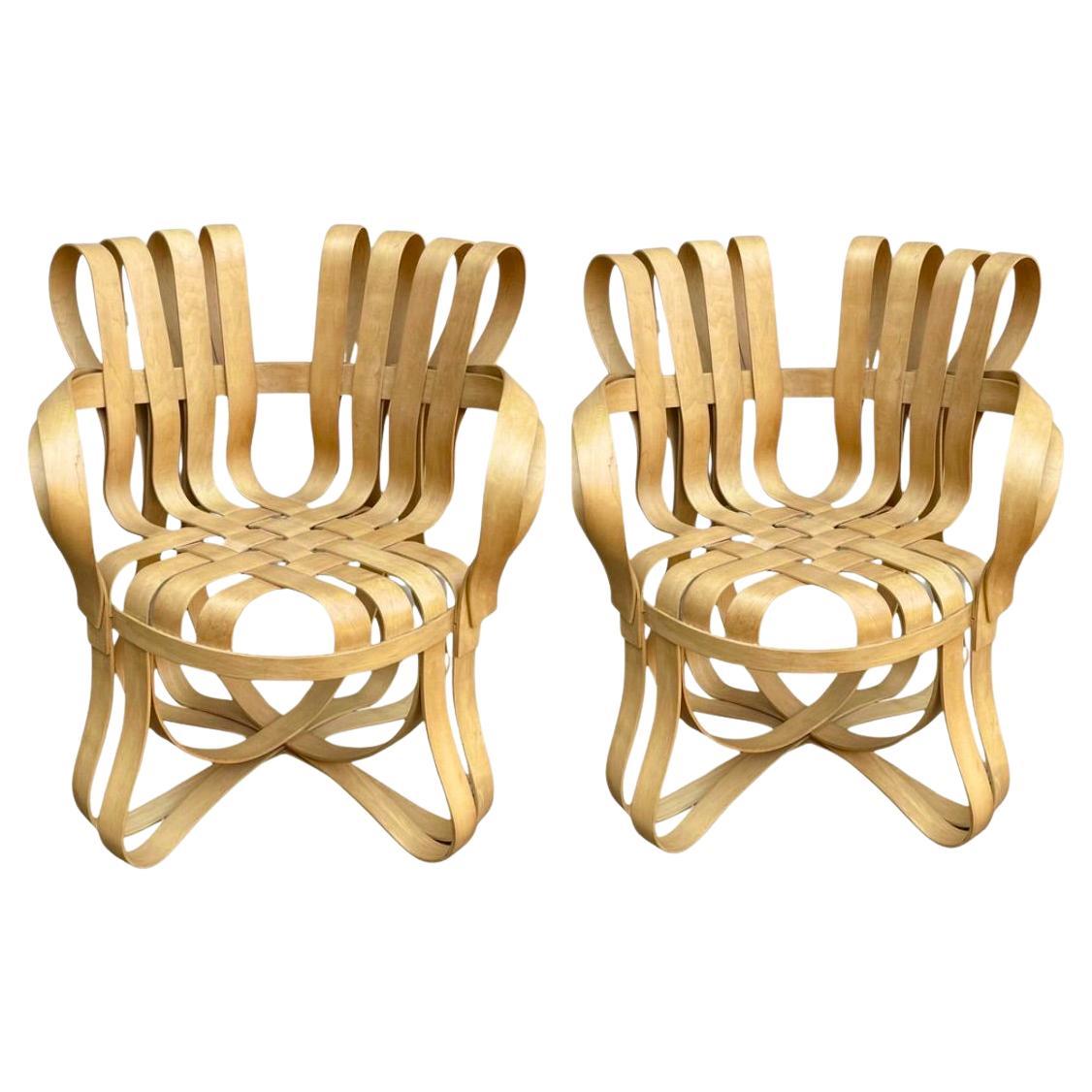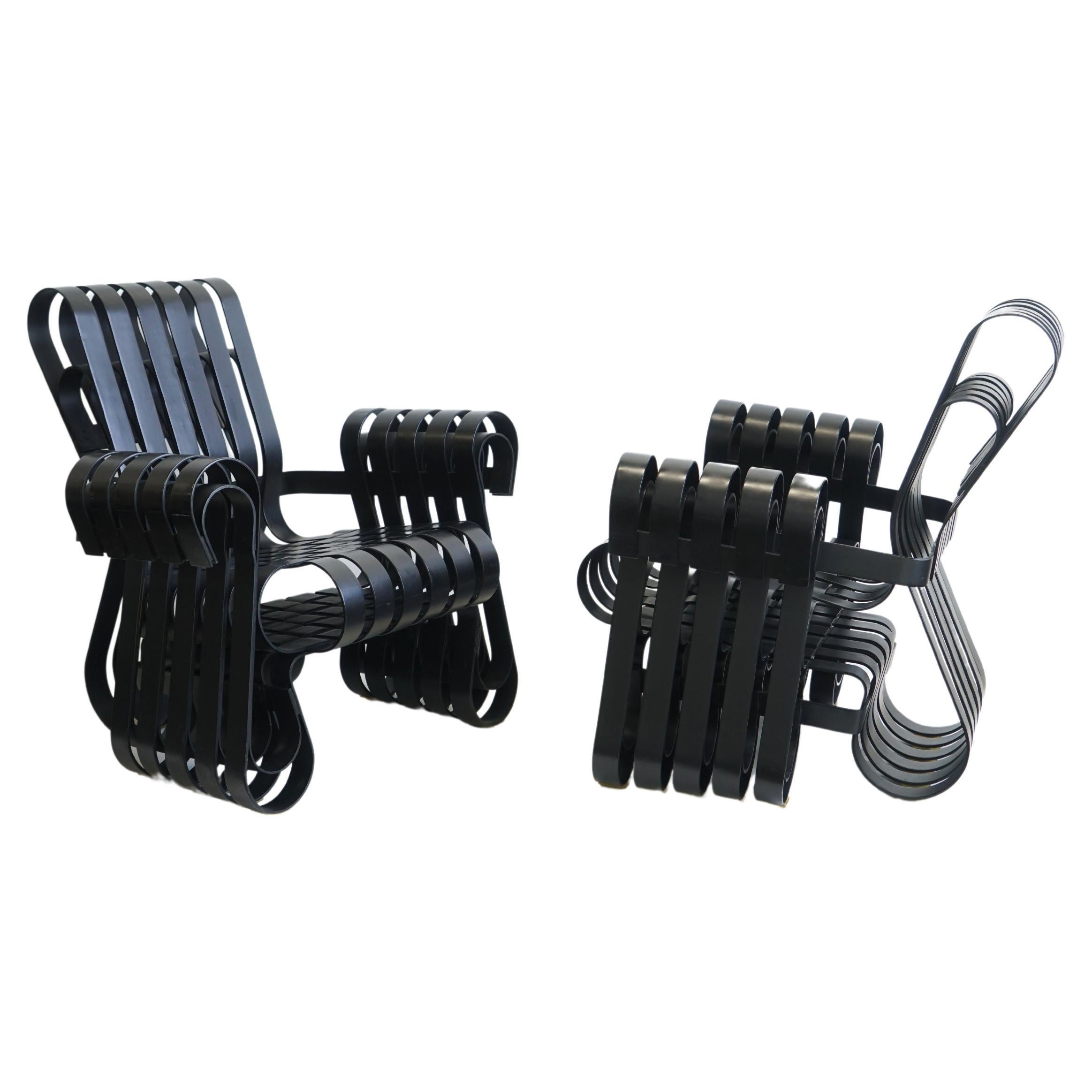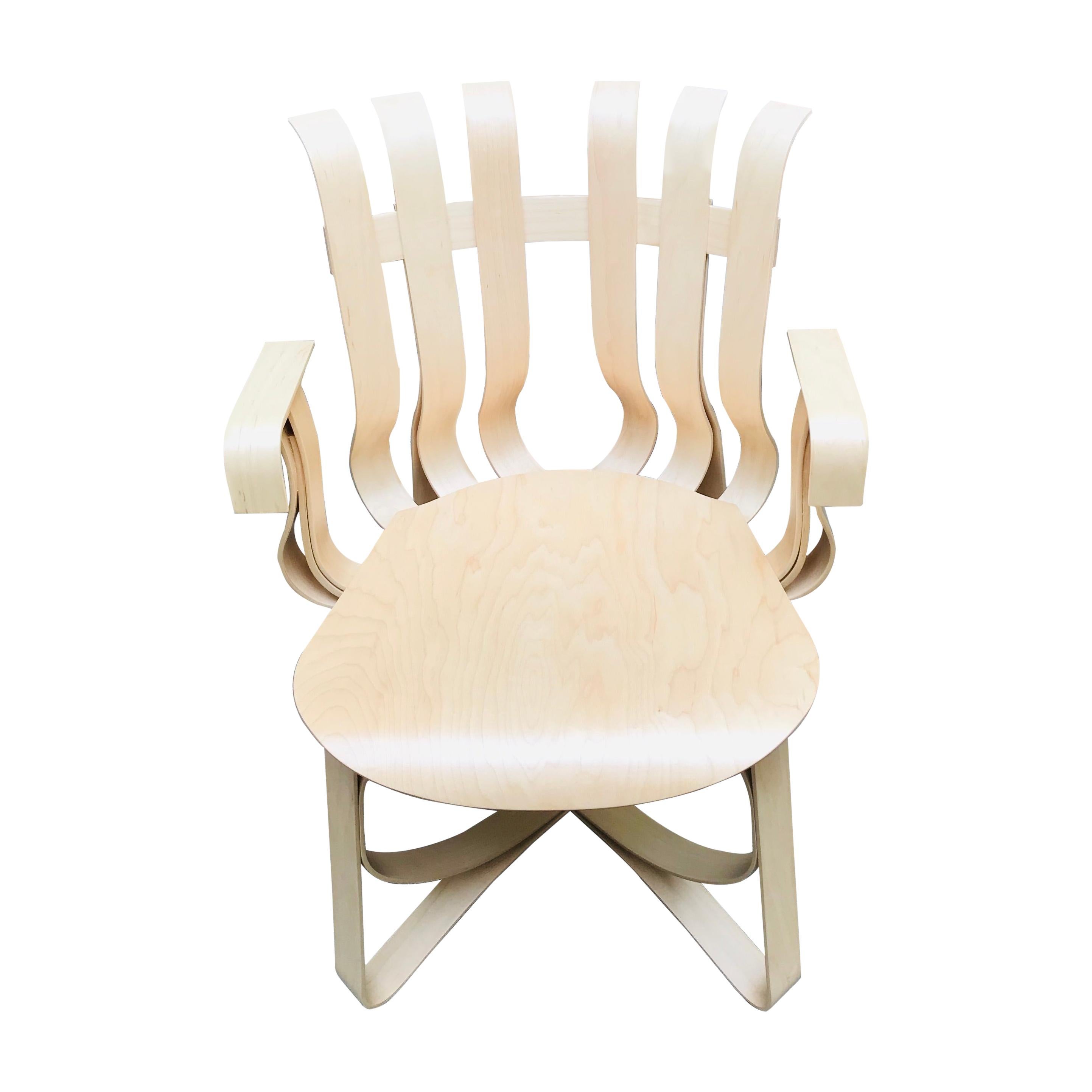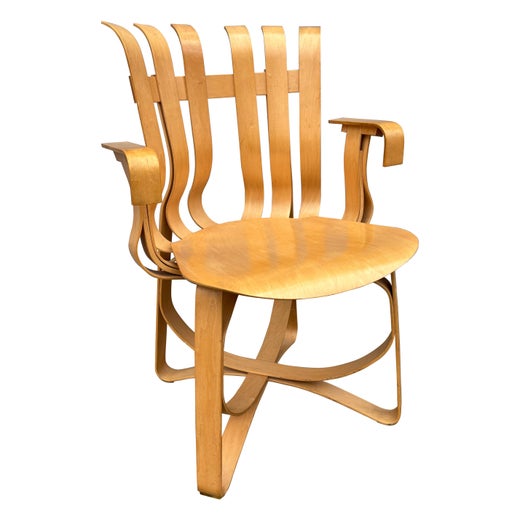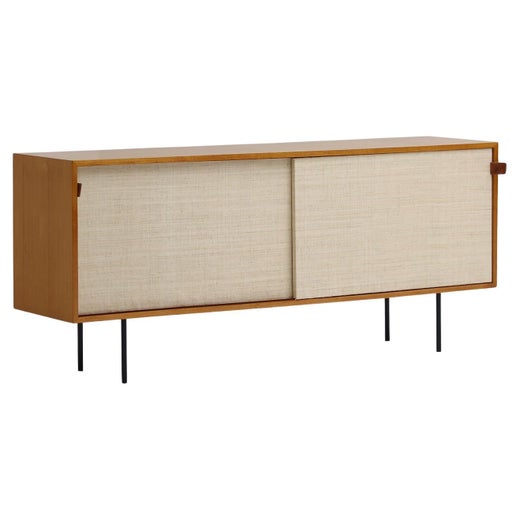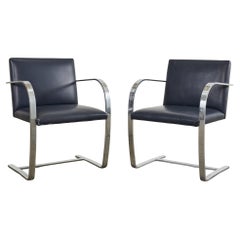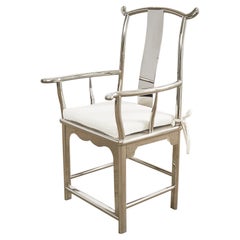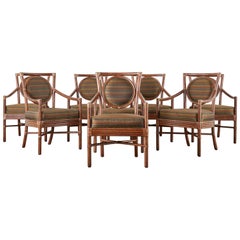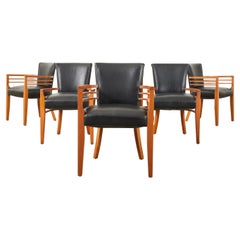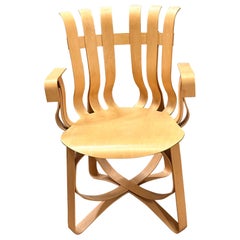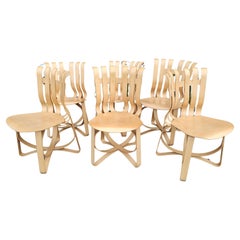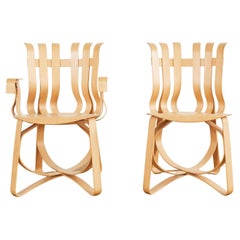
Pair of Frank Gehry for Knoll Maple Hat Trick Chairs
View Similar Items
Pair of Frank Gehry for Knoll Maple Hat Trick Chairs
About the Item
- Creator:Frank Gehry (Designer),Knoll (Manufacturer)
- Dimensions:Height: 33.5 in (85.09 cm)Width: 22.5 in (57.15 cm)Depth: 22 in (55.88 cm)Seat Height: 18 in (45.72 cm)
- Sold As:Set of 2
- Style:Post-Modern (Of the Period)
- Materials and Techniques:
- Place of Origin:
- Period:
- Date of Manufacture:Late 20th Century
- Condition:Wear consistent with age and use. Very good condition with age appropriate wear and fading as seen in photos.
- Seller Location:Rio Vista, CA
- Reference Number:1stDibs: LU1555228037732
Frank Gehry
With magnificent buildings such as the Guggenheim Bilbao, Disney Concert Hall in Los Angeles and the new Foundation Louis Vuitton in Paris, Frank Gehry has changed the nature and spirit of contemporary architecture. Yet the world’s best-known living architect has also enjoyed a prolific career as a designer of artful and functional objects, ranging from furniture to jewelry, that even at smaller scale are as lively and captivating as his architectural designs.
Gehry was born in Toronto and moved with his family to Los Angeles in 1947. He received a degree in architecture from the University of Southern California in 1954 and — after several years of casting about that included a stint in the U.S. Army and studies at Harvard — Gehry opened his architectural practice in L.A. in 1962.
Idiosyncratic renovations to his small, traditional house in Santa Monica — such as cladding portions of the exterior in chain-link fencing and corrugated metal — drew attention to Gehry in architectural circles. Corporate and institutional commissions added to his reputation, culminating in the global acclaim that greeted the opening of the Guggenheim Bilbao in 1997. But the combination of visual dynamism and structural integrity expressed by that building had been evident for decades in Gehry’s designs. In 1972 he introduced a much-admired line of furniture he called Easy Edges. The curves and flowing lines of the pieces, which include the Wiggle chair, seem antithetical to the material are made from: cardboard — a presumably flimsy material that, when stacked, laminated and folded, is actually extraordinarily sturdy.
Many of Gehry’s designs feature an abstracted fish motif. For the architect, it is a symbol of vitality, strength and flexibility. The fish appears in a group of 1982 plastic lamps created for Formica (and exhibited by the Jewish Museum in New York in 2010). Gehry used the motif in crystal goblets for Swid Powell (1990), his Pito kettle for Alessi (1992) and as earrings for a 2006 jewelry collection for Tiffany that also includes torqued rings, necklaces and bangles.
Gehry returned to furniture design in 1992 with a remarkably energetic line of furniture for Knoll with frames and seating made of bent, lightweight wooden strops. (The pieces' names, such as Power Play and Cross Check, derive from ice hockey.) In 2004, Heller released a group of twisted, faceted furnishings in molded polyethylene meant to evoke Gehry’s architecture. But — whether its tableware, jewelry or furniture — all Gehry’s designs do that--sharing an animated aesthetic built on a solid foundational core. To possess a piece of Gehry design is to own one of his buildings, in miniature.
Find vintage Frank Gehry chairs, tables and other furniture on 1stDibs.
Knoll
As a company that produced many of the most famous and iconic furniture designs of the 20th century, Knoll was a chief influence in the rise of modern design in the United States. Led by Florence Knoll, the firm would draw stellar talents such as Ludwig Mies van der Rohe and Eero Saarinen into its compass. Their work would help change the face of the American home and office.
The company was formed in 1938 by the German immigrant Hans Knoll. He first worked with his fellow ex-pat, the Danish designer Jens Risom, who created furniture with flowing lines made of wood. While Risom served in World War II, in 1943 Knoll met his future wife, Florence Schust. She had studied and worked with eminent emigré leaders of the Bauhaus, including Mies, Walter Gropius and Marcel Breuer. She won Knoll over with Bauhaus notions of industrial arts, and an aesthetic that featured flat and tubular metal frames and angular forms. When Hans died in a car crash in 1955, Florence Knoll was appointed head of the company. It was as much through her holistic approach to design — a core division of the firm was dedicated to planning office systems — as Knoll's mid-century modern furnishings themselves that she brought about the sleek and efficient transformation of the American workplace.
Today, classic Knoll furnishings remain staples of modern design collections and decor. A history of modern design is written in pieces such as the elegant Barcelona chair — created by Mies and Lilly Reich — Saarinen’s pedestal Tulip chair, Breuer’s tubular steel Wassily lounge chair and the grid-patterned Diamond chair by Harry Bertoia.
As you can see from the collection of these designs and other vintage Knoll dining chairs, sofas and tables on 1stDibs, this manufacturer's offerings have become timeless emblems of the progressive spirit and sleek sophistication of the best of modernism.

Erin Lane Estate is based in the San Francisco Bay Area, and its team of furniture restorers, art curators, professional appraisers and Asia specialists sources prime vintage and antique furniture from the finest estates in Northern and Southern California. Erin Lane Estate specializes in Hollywood Regency, McGuire, Chinese and Japanese pieces.
More From This Seller
View All20th Century American Mid-Century Modern Armchairs
Steel, Chrome
21st Century and Contemporary Chinese Ming Armchairs
Steel, Chrome
21st Century and Contemporary American Organic Modern Dining Room Chairs
Leather, Fabric, Bamboo, Rattan
20th Century American Art Deco Dining Room Chairs
Leather, Hardwood
20th Century Danish Country Dining Room Chairs
Wood
20th Century American Mid-Century Modern Dining Room Chairs
Steel
You May Also Like
1990s American Post-Modern Armchairs
Maple, Plywood
1990s American Modern Armchairs
Birch
1990s German Chairs
Leather, Maple
1990s American Mid-Century Modern Dining Room Chairs
Plastic, Birch, Plywood
1990s American Mid-Century Modern Armchairs
Maple
Early 2000s American Post-Modern Armchairs
Bentwood
Recently Viewed
View AllRead More
Five of Our Favorite Pieces From the Cooper Hewitt’s Storage
The off-site collection comprises more than 215,000 pieces.
These New York Architects Love a Complicated Project
From Brooklyn townhouses to Maine campgrounds, Trattie Davies and Jonathan Toews relish a challenge, like transforming a former warehouse space into the new 1stdibs Gallery.
